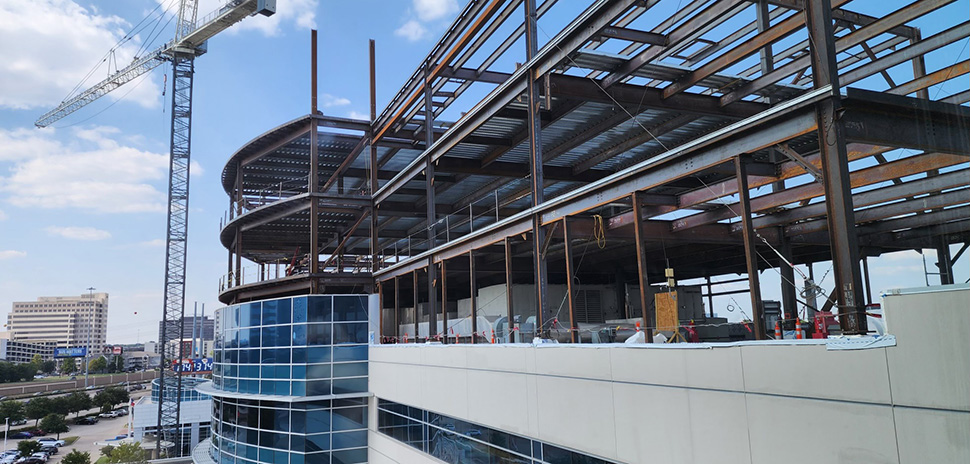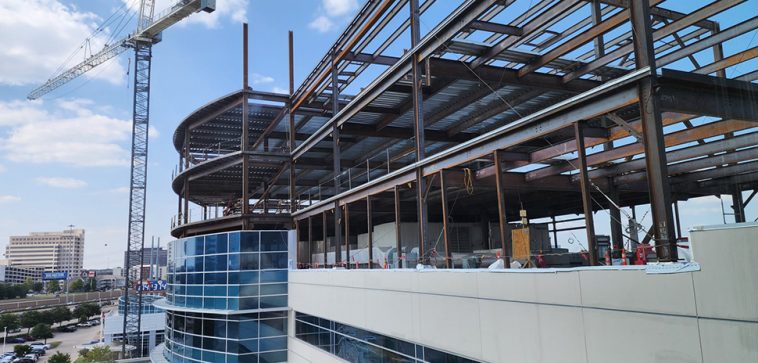
An Opinion Editorial on Dallas’ Dynamic Healthcare Landscape
As a longtime observer of Dallas’s healthcare scene, I find it both fascinating and inspiring to witness the latest developments that are reshaping the region’s medical landscape. Over the past several months, news from our local hospitals and research centers has burst forth like a vibrant tapestry of progress, innovation, and community care. In this editorial, I aim to take a closer look at several transformative initiatives—from the groundbreaking expansion at Medical City Heart Hospital to major corporate moves affecting women’s health technology, groundbreaking research accolades, and futuristic partnerships that are speeding up personalized care through artificial intelligence.
It is not just about the clinical numbers or the architectural expansions, but rather the story of people, both patients and healthcare professionals, who are adapting to a system laden with both tricky parts and inspiring achievements. The narrative is as much about overcoming the confusing bits of modern medicine as it is about celebrating the remarkable strides in patient care and innovative research.
Reimagining Cardiac Care: Medical City Heart Hospital’s $60M Expansion
Medical City Heart Hospital’s recent $60 million expansion on its seventh floor marks a pivotal chapter in Dallas’s evolving healthcare story. The new wing, which introduces a 28-bed cardiovascular ICU, is set to enhance the existing 63-bed full-service heart hospital dramatically. Medical City has shown an unyielding commitment to offering advanced care for some of the most intimidating heart and lung issues, including complex heart surgeries and advanced heart failure treatment. With state-of-the-art live support therapy integrated into its ICU beds, the facility is fully outfitted to support patients during their most nerve-racking moments.
This expansion is not just about adding more beds or new technology—it represents a strategic move into areas of healthcare that are loaded with challenges but also brimming with hope. The additional shell space reserved for future development signals Medical City’s readiness to incorporate emerging innovations in minimally invasive surgeries and other high-precision treatments. Patients in Dallas can now look forward to a hospital that not only meets the present-day demands of advanced cardiac care, but also positions itself as an incubator for tomorrow’s cutting-edge therapies.
Enhancing Life-Saving Practices in a Changing World
One of the most encouraging aspects of this expansion is the facility’s approach to tackling the many tricky parts of heart and lung patient care. Here are some of the key benefits:
- Improved Monitoring: Advanced live support therapy means real-time monitoring and quick responses to any sudden changes in a patient’s condition.
- Specialized Treatment Areas: The dedicated cardiovascular ICU allows for treatments that are specifically designed for complications in heart and lung functions.
- Future-Proofing Infrastructure: With designated shell spaces for future technological integration and developments, Medical City is clearly planning ahead.
As Dallas continues to support growing populations and a rise in cardiac conditions, the hospital’s forward-thinking design and patient-centric approach ensure that the department is equipped to find its way through even the most tangled issues associated with intensive, specialized care.
Women’s Health Reimagined: The Impact of Hologic’s Acquisition by Blackstone and TPG
The healthcare arena is continuously transformed by major corporate moves that carry the promise of enhanced patient services. The recent acquisition of Hologic—a key player in women’s health technology—by Blackstone and TPG, valued at $18.3 billion, is a case in point. Pioneered by the innovative strategies of Hologic’s leadership, this transition is expected to usher in a new era of growth, helping accelerate the development of life-changing medical technologies.
This decision is significant, not only in terms of market value but also because it signals a broader commitment to enhancing the care provided to women across the globe. Companies like Hologic have been tackling the tricky parts of women’s health concerns, from early detection of diseases to minimally invasive treatment options available to millions of women. Although corporate acquisitions can sometimes feel overwhelming or even off-putting, this move appears to be driven by a clear objective: to bolster research, innovation, and accessibility in women’s healthcare.
Key Implications for Women’s Health Technology
Here are some of the promising changes that may unfold as a direct result of this significant acquisition:
- Increased Investment in Research: With the backing of Blackstone and TPG, Hologic is now poised to invest further in breakthrough research and development.
- Enhanced Global Reach: The new ownership structure is likely to expand the company’s market presence by making cutting-edge technologies accessible to a broader audience.
- Focus on Patient-Centric Innovation: The support from seasoned investment firms can accelerate the production and adoption of tools that directly benefit patient care in women’s health.
For us as observers and beneficiaries of these developments, it is reassuring to see that key players in the healthcare arena are taking proactive steps to find strategies that address the little details of patient needs. Even though corporate restructurings come with their own set of tangled issues, the direction in which Hologic is headed seems promising for the future of women’s health globally.
Pioneering Research Excellence: UTSW Professors Honored by the National Academy of Medicine
The medical research community in Dallas has reason to celebrate following the recent election of two distinguished professors from UT-Southwestern Medical Center into the National Academy of Medicine. Professors Duojia Pan and Joshua Mendell, renowned for their contributions to cancer research and molecular biology, have added another feather to Dallas’s cap of innovative healthcare advancements.
Their achievements underscore the importance of tackling the confusing bits found in advanced scientific research. Professor Pan’s work on understanding how molecular pathways steer tissue growth, and Professor Mendell’s pioneering studies on noncoding RNA functions, are not mere academic exercises—they are the foundations stones upon which future therapeutic strategies can be built.
Breaking Down the Achievements into Understandable Components
To appreciate the impact of these recognitions, it is worthwhile to examine some key aspects of their work:
- Understanding Tissue Growth: Professor Pan’s research sheds light on the tricky parts of how cells grow and differentiate—knowledge that could lead to new treatments for cancer and other diseases.
- Exploring Noncoding RNA: Professor Mendell’s investigation into noncoding RNA offers promising clues into the roles that these small molecules play in gene regulation, potentially transforming our understanding of disease prevention and treatment.
- Broader Implications: The electing of these professors promises to open avenues for more refined research approaches, encouraging industry collaborations and attracting research funding to further solve the tangled issues found in molecular biology.
Their work is super important not just for academic circles, but for everyone who depends on medical research to uncover new treatments for prevalent diseases. It stands as a testament to the fruitful marriage between clinical application and theoretical science, a union that promises to bring about a wave of new solutions for long-standing health challenges.
Accelerating Innovation: Verily and NVIDIA’s Partnership in Precision Health
The collaboration between precision health company Verily and technology leader NVIDIA is emblematic of how cross-industry partnerships are reshaping healthcare. By integrating NVIDIA’s advanced computer chips with Verily’s artificial intelligence software, the aim is to boost the speed and efficiency of health data analysis on a cloud-based National Institutes of Health platform.
This move is particularly exciting for those who appreciate the merging of high-tech innovations with everyday patient care. The partnership is designed to address the sometimes overwhelming amounts of data generated by clinical settings and medical research. In an era where information overload is common, this collaboration is set to sort out the messy bits through refined data models and intelligent algorithms.
How the Partnership is Set to Transform Precision Medicine
The tangible benefits anticipated from this collaboration include:
- Increased Computational Speed: NVIDIA’s latest technology will help Verily’s AI dig into large datasets at speeds that were previously unimaginable, making it easier for researchers to get to the nitty-gritty of patient data.
- Improved Analytical Tools: Features like Refinery, a data model for organizing structured information, and the AI Exchange forum, are set to make the analysis process more efficient and collaborative.
- Enhanced Customization: The cloud-based platform’s flexible workspaces and customizable analysis tools allow healthcare providers to tailor information to meet individual patient needs more effectively.
As we watch this space, it is clear that partnerships of this nature help steer through the challenging twists and turns of modern medical research. They do not merely add to technological noise but signal a methodical, measured approach to enhancing the precision and speed of healthcare diagnostics and treatment planning.
Statewide Recognition: Healthgrades 2026 Rankings and What They Mean for Local Hospitals
Across North Texas, 12 major hospitals have recently received statewide rankings in Healthgrades’ 2026 State Rankings Awards. These rankings, derived from an analysis of Medicare inpatient data and patient outcome measures, are a reflection of the region’s dedicated pursuit of excellence across a variety of medical specialties.
In a healthcare system loaded with problems and subtle details that require constant attention, these accolades provide both professionals and patients with a measure of reassurance. They highlight Dallas’ commitment to finding its way through even the most nerve-racking aspects of delivering top-tier care in specialties ranging from cardiovascular surgery to gastrointestinal treatment.
A Closer Look at the Recognition Categories
Healthgrades’ evaluation process entailed looking at 31 different conditions or procedures, and the hospitals in the Dallas-Fort Worth area that received awards stood out in a number of categories. Some notable recognitions include:
- Cardiovascular and Cardiac Care: Several institutions were recognized as being among America’s 50 Best Hospitals for cardiac surgery or among the top 100 for cardiac care. This reflects the region’s super important emphasis on treating heart conditions with the latest techniques.
- Stroke and Gastrointestinal Care: Awards for stroke care and gastrointestinal surgery spotlight hospitals that are managing the tricky parts of life-threatening conditions with precision and compassion.
- Neurosciences and Orthopedic Surgery: Additional recognitions—such as neurosurgery excellence awards and top placements for joint replacement and spinal surgery—underscore the overall balance in the region’s approach to both traditional and innovative medical procedures.
For example, hospitals such as William P. Clements Jr. University Hospital, Baylor University Medical Center, Medical City Dallas, and Baylor Scott & White Grapevine have each carved out a niche among these prestigious rankings. The highlights can be seen in tables and lists that outline each hospital’s achievements, underlining the importance of specialized care in a system that is continually challenged by both predictable and unexpected health emergencies.
| Hospital | Award Areas | Notable Recognitions |
|---|---|---|
| William P. Clements Jr. University Hospital | Cardiovascular, Stroke Care | America’s 50 Best Hospitals for Cardiovascular Surgery; America’s 100 Best Hospitals for Stroke Care |
| Baylor University Medical Center | Gastrointestinal, Neurosciences | America’s 100 Best Hospitals for Gastrointestinal Care; Cranial Neurosurgery Excellence Award |
| Medical City Dallas | Vascular, Cardiac, Orthopedic | America’s 50 Best Hospitals for Vascular Surgery; America’s 100 Best Hospitals for Cardiac Care |
| Baylor Scott & White Grapevine | Stroke, Pulmonary, Neurosciences | America’s 100 Best Hospitals for Stroke Care; Pulmonary Care Excellence Award |
The detailed data behind these ratings is a reminder of the importance of information transparency, as well as the complex balancing act hospital administrators must perform as they work through the small distinctions that can save lives. For patients and their families, these recognitions confirm that the institutions serving Dallas have not only met the basic requirements but excel in areas where the stakes are incredibly high.
Looking Beyond the Headlines: Broader Implications for Dallas and Regional Healthcare
When reflecting on these developments—from expansive hospital renovations to high-profile acquisitions and prestigious awards—it is impossible not to acknowledge the shared sense of purpose driving Dallas’s healthcare community. The region is not immune to the confusing bits and unpredictable twists in the delivery of medical care, yet the response has been nothing short of remarkable.
In many ways, these multifaceted initiatives serve as a microcosm for the broader healthcare narrative in America. The efforts to address tough challenges through innovation and strategic collaboration illustrate a commitment to improving patient outcomes, even when the road is filled with intimidating hurdles and nerve-racking decisions.
Key Reflections on the Future of Regional Healthcare
As we stand at a crossroads between current practices and the promising potential of technological advancements, several key reflections emerge:
- Integration of Cutting-Edge Technology: The partnership between Verily and NVIDIA exemplifies how technology can be made to figure a path through enormous amounts of clinical data, offering future possibilities for personalized medicine and refined diagnostics.
- Emphasis on Specialized Care: The upgrade at Medical City Heart Hospital and similar targeted efforts across Dallas highlight that the devil is indeed in the little details—whether in surgical procedures or in live support technologies within an ICU.
- Collaborative Research and Continuous Learning: The honors bestowed upon UT-Southwestern’s professors are a reminder that ongoing research can help untangle the intricate issues at the heart of modern medicine, paving the way for future therapeutic practices.
- Patient-Centered and Forward-Looking Models: Whether through corporate acquisitions aimed at fostering innovation or through hospital rankings that hold institutions accountable, there is a growing recognition that the patient’s experience must remain at the center of these transformations.
In a system that is at times overwhelmed by the many twists and turns of rapid innovation, it is incredibly heartening to see Dallas’s healthcare leaders making clear, measured decisions that benefit the community at large. Each step, each investment, and each award reinforces the notion that while the journey may be full of problems and subtle parts, success lies in the persistent drive to improve and innovate.
Conclusion: A Bright Outlook for Dallas Healthcare
The sweeping changes observed across Dallas’s healthcare ecosystem are a testament to the combined power of innovative thinking, strategic collaboration, and an unwavering commitment to patient care. From the bold expansion of Medical City Heart Hospital, destined to improve cardiac care in ways that were once thought intimidating, to the dynamic corporate and research developments shaping women’s health and precision medicine, the region is indeed redefining what it means to deliver high-quality healthcare in a modern age.
As we look ahead, the challenges that lie in the tangled issues and nervous twists of modern medicine remain, but so too does the resilience and ingenuity of the community that serves Dallas. The future promises even more advanced techniques, integrated technologies, and research breakthroughs that will continue to improve outcomes and make healthcare less overwhelming for patients and providers alike.
For those of us who are invested in the progress of our local healthcare system, it’s time to celebrate these milestones while staying vigilant about the improvements still needed. Whether you are a healthcare professional, a patient, or an interested observer, keep poking around, taking a closer look at emerging trends, and supporting the initiatives that aim to make Dallas an even better, and yes, even veggier, place. The very strides we witness today are the building blocks for the compassionate, efficient, and innovative care of tomorrow.
In summary, the developments discussed here not only symbolize a moment of change but rather signal the dawn of a sustained era of progress in Dallas healthcare. As we continue to witness a blend of high-tech innovation and compassionate patient care, it becomes clear that the road ahead, no matter how intimidating at times, is full of promise and opportunity. Only by embracing each of these new advancements—and by acknowledging both their achievements and the tricky parts they seek to solve—can we truly appreciate the unfolding story of modern medicine in the heart of Dallas.
It is my sincere hope that this opinion editorial serves not only to inform but also to inspire all stakeholders—hospital administrators, tech innovators, researchers, and patients alike—to take a more active role in championing healthcare reform. After all, the success of our system depends on the ability to find our way through confusing bits and to work together in sorting out the nerve-racking challenges posed by modern medical practice.
As we move forward, let us remain committed to the principle that every innovation, every expansion, and every accolade speaks to a larger mission: to ensure that healthcare in Dallas remains not only advanced and efficient but also compassionate and inclusive. The ties between the medical community, corporate partners, insurers, and the citizens they serve must continue to be strengthened, making Dallas a shining example of what healthcare can be when it truly reflects the needs and aspirations of its people.
Ultimately, the efforts described today remind us of the power of collective progress—of finding your way through the confusing bits and making sense of the seemingly overwhelming challenges of modern healthcare. Whether it’s through cutting-edge technology, strategic investments, or groundbreaking research, every element contributes to a healthier, more innovative future for Dallas and beyond.
In closing, let us appreciate the super important efforts undertaken by institutions such as Medical City Heart Hospital, Hologic, UT-Southwestern, Verily, and many others. Their dedication to advancing patient care, despite the many intricate turns on our healthcare journey, is what makes Dallas a leader in modern medicine. As observers and participants in this unfolding narrative, we are not merely spectators; we are active contributors to shaping the future of healthcare—with each new development, helping to pave the way for a system that is as dynamic as it is compassionate.
By continually striving to figure a path through the tangled, intimidating, and occasionally nerve-racking worlds of modern medicine and technology, Dallas has set a robust example for other regions to follow. The continuous process of innovation, research, and collaboration that defines our local healthcare scene paints a picture of not only challenges overcome, but also of a bright, promising future where every patient stands to benefit from the best that healthcare can offer.
Originally Post From https://www.dmagazine.com/healthcare-business/2025/11/healthcare-briefs-medical-city-heart-hospitals-60m-expansion-and-dfw-healthgrades-recognition/
Read more about this topic at
DFWHC’s “Volume to Value” just one week away!
A Texas-sized revolution in lifestyle medicine

